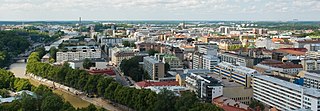
Turku is a city in Finland and the regional capital of Southwest Finland. It is located on the southwestern coast of the country at the mouth of the River Aura. The population of Turku is approximately 202,000, while the metropolitan area has a population of approximately 311,000. It is the 6th most populous municipality in Finland, and the third most populous urban area in the country after Helsinki and Tampere.

In local government, a city hall, town hall, civic centre, guildhall, or municipal building is the chief administrative building of a city, town, or other municipality. It usually houses the city or town council, its associated departments, and their employees. It also usually functions as the base of the mayor of a city, town, borough, county or shire, and of the executive arm of the municipality.

The University of Turku is a multidisciplinary public university with eight faculties located in the city of Turku in southwestern Finland. The university also has campuses in Rauma and Pori and research stations in Kevo and Själö.
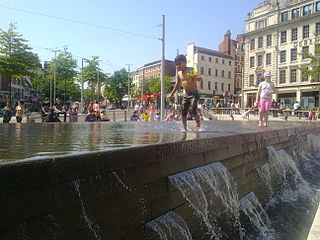
The Old Market Square is an open, pedestrianised city square in Nottingham, England, forming the heart of the city, and covering an area of approximately 12,000 square metres (130,000 sq ft), or about 3 acres (1.2 ha). It is one of the largest paved squares in the United Kingdom.

Turku Castle is a medieval building in the city of Turku in Finland. Together with Turku Cathedral, the castle is one of the oldest buildings still in use and the largest surviving medieval building in Finland. It was founded in the late 13th century and stands on the banks of the Aura River. The castle served as a bastion and administrative centre in Eastland, as Finland was known during its time as a province of Sweden. Only once did the castle figure in the defence of the realm, when Russian invaders from Novgorod destroyed Turku in 1318. It more frequently played a role in internal struggles for power within Sweden and the Kalmar Union. The castle's heyday was in the mid-16th century during the reign of Duke John of Finland and Catherine Jagellon. That was when the Renaissance Floor and King's and Queen's hall were built, along with other features. It lost its status as an administrative centre in the 17th century after Per Brahe's period as governor-general of Finland came to an end. Turku castle is today Finland's most visited museum, with attendance reaching 200,000 in some years. In addition, many of the larger rooms are used for municipal functions.

The Medieval Market of Turku is an annual historical reenactment event organised in the historic city centre of Turku, Finland. Admission to the event is free. In addition to living history performances, it includes an open-air handicrafts market with vendors and even visitors garbed in period costume. The main market is at the Old Great Square, but there are other performances and exhibitions at Turku Castle, Turku Cathedral and at the Aboa Vetus & Ars Nova Museum. Together these different performances and exhibitions form the Medieval Turku event, which is organized in unison by Turun Suurtorin keskiaika ry, the Museum Centre of Turku, the Aboa Vetus & Ars Nova museum, Rohan Stables and Turku and Kaarina Parish Union. These areas are closed to traffic during the event.

Turku Cathedral is the only medieval basilica in Finland and the Mother Church of the Evangelical Lutheran Church of Finland. It is the central church of the Lutheran Archdiocese of Turku and the seat of the Lutheran Archbishop of Finland, Tapio Luoma. It is also regarded as one of the major records of Finnish architectural history.

The VII District is one of the central districts of Turku, Finland. It is located on the west side of the river Aura, between Aurakatu and Puistokatu. Like the neighbouring VI District, it forms part of the city's central business district. The two districts combined host a large proportion of the city's business life, particularly around the Market Square. Turku City Hall is located in the VII District, as well as the Turku Central Railway Station.
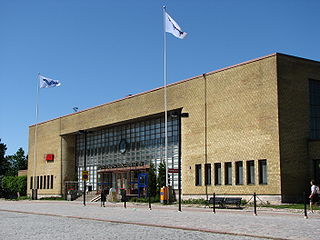
Turku Central Station is a railway station in the VII District of Turku, Finland. It has VR services to Helsinki and towards Joensuu. The station serves approximately a million passengers annually.
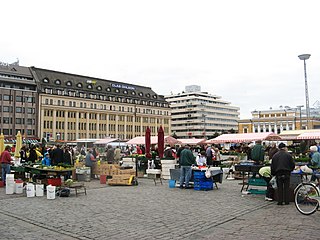
The Market Square is a city square in the city of Turku, in Finland. It is located in the city's VI District, and is generally considered the city's central square. It hosts a lively market on weekdays, and there are several cafés and restaurants on the square.

The Great Fire of Turku was a conflagration in the city of Turku in 1827. It is still the largest urban fire in the history of Finland and the Nordic countries. The city had faced several large fires before, including an especially devastating fire in 1681.

Vartiovuori Observatory is a former observatory in Turku, Finland. The observatory, designed by Carl Ludvig Engel, was originally built for the Royal Academy of Turku. The neoclassical building was completed in 1819. The observatory is situated atop the Vartiovuori hill, and it is clearly visible from different sides of the city centre.

Turku City Library is a municipal public library in Turku. The Main Library is located in the VI District at the city centre. The Turku City Library also operates several branch libraries and two mobile libraries. It is part of the Vaski library network, which is a consolidation of 18 public libraries in the Southwest Finland region.

Turku Main Library is the chief branch of Turku City Library, located in the city centre of Turku, Finland. The library is approximately 8,500 m2.

Puutori is a market square in the city centre of Turku, Finland. It measures at approximately 100 by 40 metres. It is bordered by Aninkaistenkatu/Aningaisgatan, Maariankatu/Mariegatan, Brahenkatu/Brahegatan and Sibeliuksenkatu/Sibeliusgatan. Today, it has no regular market square activity but Puutorin puolesta ry organises different events there each year. Located at one end of the square are Ystävyydenpuisto and Wäinö Aaltonen's statue Kun ystävyyssuhteet solmitaan, which was designed in 1955 in honour of the friendship between Turku and Göteborg. There are also small cafés and shops surrounding Puutori, as well as a pet store.

Tartu Town Hall is the seat of the city government of Tartu, Estonia. It is located on Town hall square, in the city centre.

Christmas Peace is a traditional Finnish event whereby a town formally announces the beginning of the Christmas season. This practice has its roots in old Swedish legislation and was established by Birger Jarl in the 13th century, building upon the Truce of God tradition. Offenders who committed crimes during the Christmas season were subjected to harsher punishments. The declaration of Christmas Peace is a symbolic and integral part of the Christmas tradition in Finland in the present day. Tradition encourages people to be respectful and peaceful at Christmas.

The Sibelius Museum is a museum of music, named after the Finnish composer Jean Sibelius. The museum is located close to Turku Cathedral in the historical city centre of Turku on the southwest coast of Finland. It is the only museum devoted to music in Finland. The museum houses a wide collection of historical music instruments from around the world. The archives of the museum include documents The museum was first founded during the 1920s as a seminar for the Department of Musicology at Åbo Akademi University, and has later developed into its own department. The Museum is currently organised and funded by the Åbo Akademi Foundation. The current building was built and opened in 1968 and it was designed by architect Woldemar Baeckman.

Turku is Finland's oldest city, having been founded in 1229. The city has a history as part of Sweden, Russia, and finally as an important city of independent Finland. Turku played a pivotal role during the Middle Ages as part of the Kingdom of Sweden. In the 16th century, it was the second most important city in the kingdom, after Stockholm. Turku served as the administrative, academic and religious centre of the eastern part of the Swedish kingdom, known today as Finland.
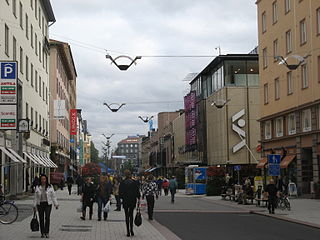
Yliopistonkatu is a 1,5-kilometer-long street located in the city center of Turku, Finland, running parallel to the Aura River, starting at Kutomonkatu and ending at Koulukatu. Since 2001, the part of Yliopistonkatu between Aurakatu and Humalistonkatu, which is about four hundred meters long, has been a pedestrian street. The area of the current pedestrian street has been Turku's Christmas street since 1948. The Turku Market Square is also located along Yliopistonkatu.






























